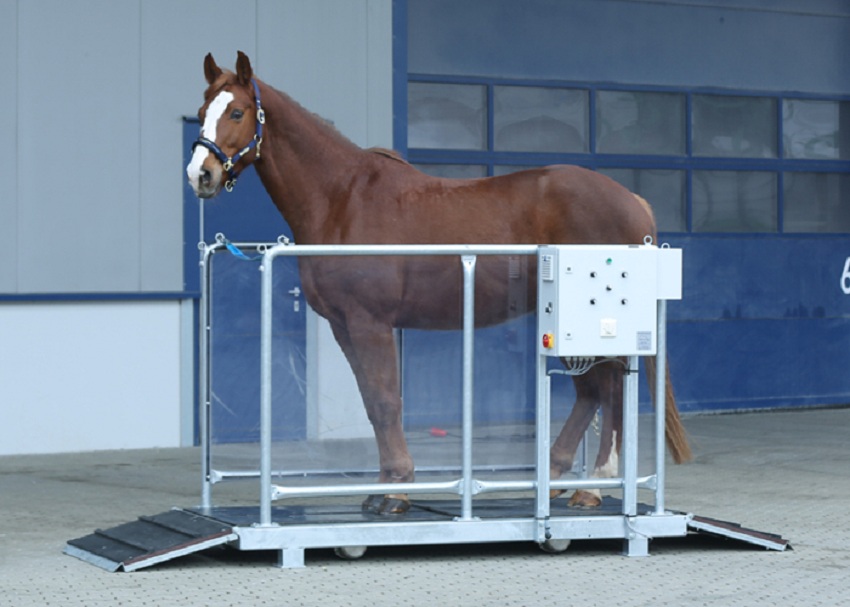Best Practices for Using Vibration Plates in Equine Training
With advantages including increased muscular tone, joint flexibility, circulation, and general recuperation, vibration plates have become a useful tool in equine training and rehabilitation. These plates improve performance and hasten injury healing by sending mechanical vibrations through the horse’s body, which trigger physiological reactions. Use vibration plates with caution to protect the horse’s health and safety. The following are the most effective methods for using vibration plates in horse training.
1. Start with a Thorough Veterinary Consultation
Caretakers must speak with an equine physiotherapist or veterinarian before exposing a horse to vibration plate training. Like any athlete, horses have unique needs, and a health examination makes sure that any current ailments or injuries will not be made worse by vibration therapy. Vibration treatment, for instance, may be helpful for horses healing from tendon or ligament injuries, but only if used under supervision.
Consider the age, training level, and any health issues when customizing vibration therapy for a horse’s particular physical condition. Under expert supervision, therapy can enhance the horse’s general health and performance strategy.
2. Proper Introduction to Vibration Plates
For comfort and safety, you must introduce the horse vibration plate gradually. Since horses are inherently wary, the strange vibrations may initially make them nervous or stressed. Start with brief sessions at the lowest vibration settings to avoid this. As the horse becomes used to the feeling, gradually lengthen the sessions and increase their intensity.
Before turning the plate on, ensure the horse is happy with it in its static form. Let the horse stand on the plate for a few minutes before turning it on. The animal becomes less sensitive, and the plate gains credibility.
3. Optimal Session Timing and Duration
Vibration therapy has several advantages, but excessive use might cause muscle weariness or overstimulation. Observe the length and frequency of the sessions. Trainers should begin with brief sessions of five to ten minutes at modest vibration levels for the majority of horses. Sessions can be progressively extended to 20 minutes as the horse adjusts.
According to veterinary guidelines, horses in regular training should use vibration plates two to three times per week. That could change in rehabilitative settings, though, based on the damage and the veterinarian’s recommendations. Sessions should not last longer than thirty minutes because extended vibration exposure may cause discomfort in the horse’s musculoskeletal system.
4. Monitor the Horse’s Response
Vibration treatment works differently for each horse, so it is vital to Focus on how they behave both during and after each session. Keep a look out for indicators of relaxation, including a relaxed posture, a lowered head, softening of the eyes, and chewing and licking. These show that the therapy is having a positive effect on the horse.
However, symptoms of discomfort like pawing, shifting weight, or pinning ears back could indicate that the horse is uncomfortable with the length of the session or the level of vibration. In these situations, lessen the time or intensity and resume the therapy more gradually. To guarantee successful results, focus on the horse’s performance, movement, and muscle recovery after the session.
5. Use in Combination with Other Therapies
The best results from vibration plates come from a larger horse wellness program. The vibration treatment can greatly improve muscle healing, promote circulation, and improve flexibility when paired with stretching, massage, and appropriate training methods.
Many trainers employ vibration plates as a warm-up before training or as part of a cool-down program to increase blood flow and decrease muscular fatigue. Vibration treatment, combined with other healing techniques such as hydrotherapy, laser therapy, or chiropractic adjustments, can produce a thorough rehabilitation and performance improvement program for the horse.
6. Safety Considerations
During vibration plate exercises, the horse’s safety must always come first. Always set the vibration plate on a level, sturdy surface to reduce dangers. Movement could cause harm. You must avoid any movement by ensuring the horse is firmly secured. The vibration plate is surrounded by soft rubber mats that offer extra cushioning and stop the horse from slipping when stepping on and off.
Check the vibration plate frequently to ensure the vibration plate’s settings are within safe bounds. Inappropriate usage of the equipment, such as prolonged sessions or excessive intensity, can strain the horse’s ligaments, tendons, and joints. Should an unpleasant reaction occur, terminate the session and seek veterinary advice before starting any further treatment.
7. Focus on Recovery and Rehabilitation
Vibration plates are useful for rehabilitation and recovery. That is one of their main benefits. Vibration therapy can help prevent muscle atrophy in rehabilitation settings through the maintenance of muscular tone in confined horses. However, perform all the rehabilitation programs with the guidance of a veterinarian to guarantee the best possible recovery results.
Conclusion
When utilized properly, vibration plates are an effective training and recovery aid for horses. Trainers may ensure the therapy improves the horse’s general health by beginning with a veterinary consultation, gradually introducing the vibrations, and observing the horse’s reactions. Vibration plate therapy is more successful when combined with other rehabilitation methods. Best practices maximize performance, hasten recovery, and guarantee the horse’s well-being. Safety is still the top priority.

